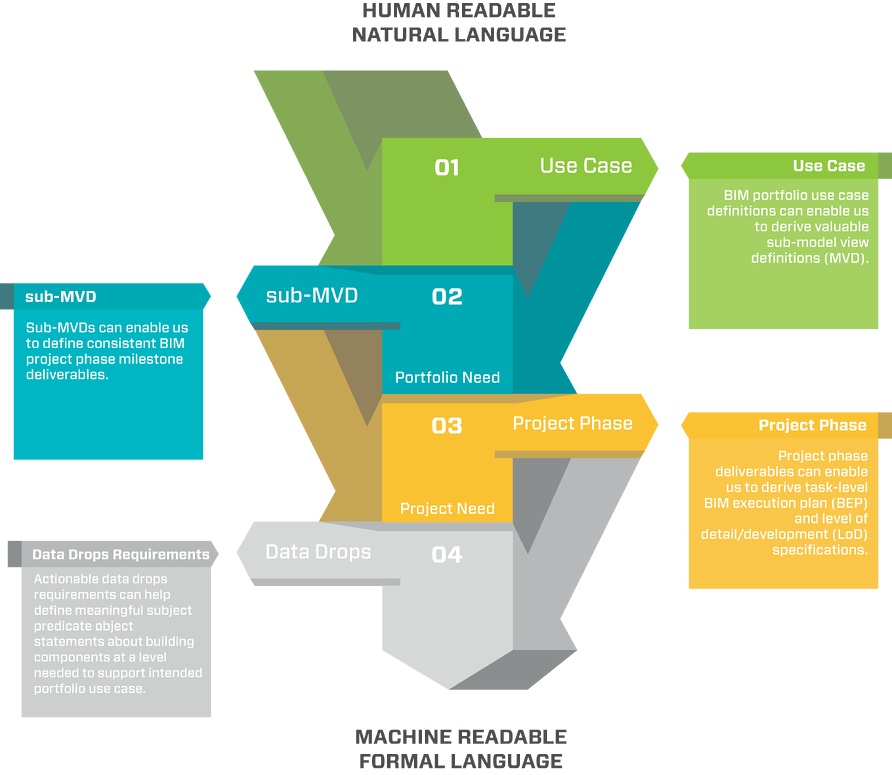We have all read articles reminding us to consider Building Information Modeling (BIM) as more than just a model because it is a process as well. This is not one of those articles.

I am interested in discussing the aspect of every BIM exchange that includes predicates, which are the verbs in every description of building components we collaboratively define. When it comes time for us to communicate information exchanges with our peers, who are subsequent stakeholders consuming our BIM contribution to design and construction projects, we must first carefully consider the type of content appropriate for our required deliverables. It’s worth taking just a moment to understand that we are all stewards of the technology we deploy to collectively create an optimal model.
In order to create an optimal model, one must first identify business-related BIM use case specification (UCS), which broadly describes building phases, disciplines and component types desired to be captured in a design and construction project. Once a UCS is selected, you should identify technology-related, machine-readable BIM specifications-building systems, types, components and attributes, as well as repairs and maintenance requirements-called Model View Definitions (MVDs). These specifications focus on defining the concepts necessary to transfer information between software applications. Commonalities, which may exist across two MVDs, are re-usable subsets and referred to as sub Model View Definitions (subMVDs), which are extremely useful in practice.

Regardless of which authoring software or delivery file format you have standardized for your discipline, we must capture elements of a building in simple categories and phrases. One effective way to describe most available software solutions is that authors make statements about design intent and installed components using phrase syntax of: Subject predicate object. Ex: This door has a handle of type lever.
Note: Although the M in the BIM acronym represents ‘modeling’ or ‘management of a ‘model’, which is an action, I am instead calling attention to the verb within every semantic sentence structure within the model itself, because this is where the action really is!
Let’s look at the example from above: This door has a handle of type lever.
Revit (RVT) format helps us tremendously by allowing any user to capture predicates in the form of relations (ex: has a) between subjects (ex: door) and objects (ex: lever handle) using custom family shared parameters. However, we have all probably experienced by now that these shared parameters are often not easily transformed effectively to other formats for delivery. As a result, owners are increasingly requesting COBie (XLS format) deliverables for portfolio facilities management to help mitigate this interoperability issue.
It should be noted that COBie is a subMVD (see image above) of Industry Foundation Classes (IFC). Therefore, what would be most valuable for a Revit project requiring COBie is a consistent RVT to IFC to COBie solution that meets each involved stakeholder’s BIM use case needs. It is my experience that this is very possible. It is also my assertion that a sucessful exchange is typically possible only after at least some portfolio and/or project-related research and development.
I hope this explanation provides a little insight as to why it is better practice to NOT assume that any one format or software will necessarily provide immediately useful deliverables (BIM as a noun) without some trial and error (BIM as a verb). Design and construction team members would be well advised to keep an eye on both the project’s success as well as our own BIM needs.
It is for these reasons that Array’s focus is so deeply on Informatics; to drive project success by encouraging broader thinking around and diving deeper into the models we deliver.

